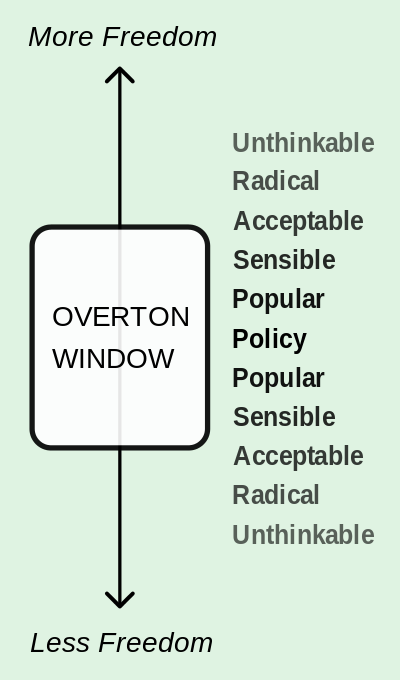the overton window, the task of imagination, and implications for activists
25 Sep 2016a few weeks ago at a big talk (an anti-small talk dinner group - link forthcoming), i was introduced to the overton window.

in short, the window is a tool of analysis that was created to make clear how viable a policy was. in any particular context, ideas closer to the center of the window were more viable as policy. the further one gets from the center of the window, the less politically viable a policy is.
while a useful framework on its own, the overton window makes me think about lots of other things.
the window obviously excludes the radical and unthinkable. however, over time, what’s radical and unthinkable shifts. for example, in america, the idea that black people could marry white people or that two same-sex people could marry each other, were both previously untenable. however, now both of those things are federally legal and acceptable.
so then i ask, how does something move from unthinkable, to radical, to acceptable on and on until it becomes palatable and acceptable policy?
people need to be able to imagine the unthinkable. and how to they imagine the unthinkable? someone needs to make it real.
there is wehre i think imagination comes in. #the4thbox is a project cooked up earlier this year by some friends and i and it was designed to do just that: help people imagine an alternate reality.
but beyond just supporting people to imagine these other realities, i think the role of change makers (organizers included) is to create actual visions of other realities.
this is the type of social change work i’m the most excited about it and drawn to. yes, tearing down old, oppressive systems is critical. AND. without knowing where else to go, it’s really hard for people to unplug from the systems that support them (oppressors and oppressees alike). this is what i think i’m committing myself to and i’m pretty excited about it.
relevant resources and groups: